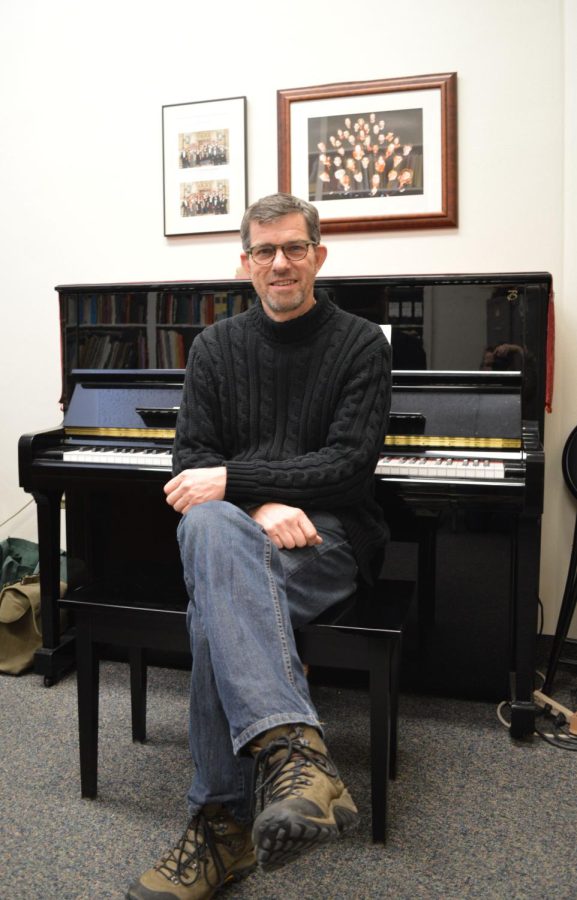Rate my Professor ranks professors skills, appearance
Kent State Professor Scott MacPherson has a rating of 4.5 out of 5 on the website Rate my Professor.
February 17, 2016
When students need help in deciding on who to choose as their next professor, many turn to the popular website Rate my Professor.
Rate my Professor takes reviews from individuals who rate professors on a 1-5 scale based on the following categories: easiness, clarity and helpfulness. One feature, though, raises a few eyebrows: the hot tamale rating.
Among the other generic and academically relevant categories, students can also rank a professor’s physical appearance, with positive reviews leading to a bright red tamale on the teacher’s profile.
While the website has been proven to be useful when helping students choose their future professor, even garnering a nod from TIME magazine as one of the best websites in 2008, some feel that the hotness rating is somewhat complicated.
Scott MacPherson, a professor of music at the Kent campus and director of the Kent State Choral and Kent Chorus, has an overall rating of 4.5 out of 5 on the site, and is rated as a hot tamale.
“I don’t really look at Rate My Professor… I’m glad to hear I have (a high rating in other areas) because to me, that’s what’s important,” MacPherson said.
Alice Gianfagna, a junior English major, feels that the rating is ridiculous and distracts from what the website should provide.
“It devalues what’s really awesome about teachers, that they teach,” Gianfagna said. “I can understand the topic coming up outside of class, maybe joking around friends, but it’s all very objectifying for someone to be rated.”
MacPherson takes the rating in stride, though.
“(The hotness rating) made me laugh because I’m actually a grandpa, my oldest daughter has children … I might be the only grandpa on a list (of hot professors),” MacPherson said.
Allison Grampa, a biological studies lecturer, has a 4.6 overall quality rating and was graded with an A- by students, with a bright red tamale on her Rate my Professor profile.
“Personally, I do not feel that students should consider attractiveness when selecting or rating a professor,” Grampa said. “Physical appearance has no impact on my ability to effectively teach my courses and provide a positive learning environment for my students.”
Grampa went on to describe the system of awarding professor’s chili peppers based on their looks was “humorous and somewhat ridiculous.”
Ashley Atherton, a senior political science major, feels that the rating doesn’t really matter to her and that it doesn’t play a role in how she chooses her professors.
“I think more then anything, it’s meant to be a joke and some students take it much more seriously than others,” Atherton said.
Rate my Professor was founded in 1999 by John Swapceinski, a software engineer, as a way to allow students to review their professors so that other students have a way to preview the professors prior to taking their courses.
It was relaunched in 2005 when it was acquired by Patrick Nagle and William Desantis, and was later sold to Viacom’s mtvU in 2007.
Rate my Professor is currently the largest destination for professor ratings and has over 8,000 schools.
Angelo Angel is an entertainment reporter for the Kent State. For more information contact him at [email protected].












